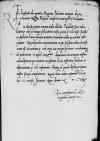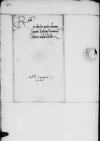Letter #2780
Elisabeth of Austria to Ioannes DANTISCUSVilnius, 1545-01-04
| received Heilsberg (Lidzbark Warmiński), 1545-01-14 Manuscript sources:
Prints:
| ||||||
Text & apparatus & commentary Plain text Text & commentary Text & apparatus
Reverendo in Christo Patri, domino
Reverende in Christo Pater, sincere nobis dilecte.
Redditae sunt nobis litterae Paternitatis Vestrae et imago
Quam bene valere optamus.
Ex commissione s(erenissimae)


 Bcz, 1618, p. 322 (272)
Bcz, 1618, p. 322 (272)